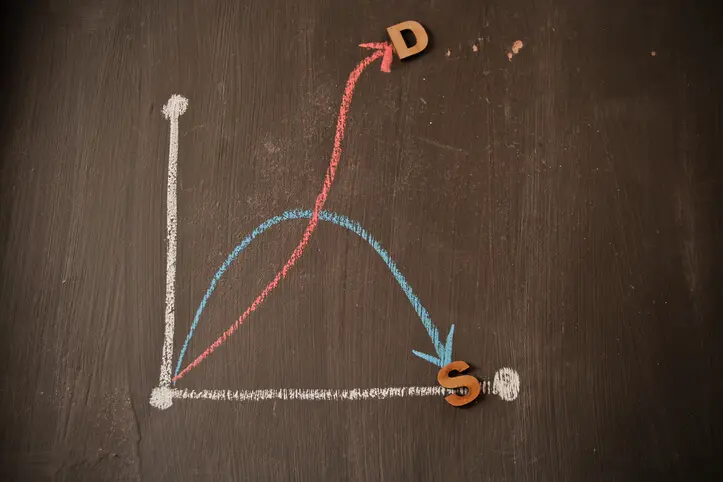Sales and Operations Planning (S&OP) has developed into an essential business process in the current complex market environment. This guide offers a detailed exploration of S&OP, providing strategies for businesses aiming to optimise operations and achieve sustainable growth in 2024 and beyond. S&OP integrates various company functions, including sales, marketing, operations, and finance, into a unified plan, fostering collaboration to balance supply and demand, improve forecasting, and support strategic decision-making.
With this guide fundamental concepts of S&OP will be expounded, encompassing its evolution, and its increasing importance in the modern business landscape. It breaks down key components such as demand and supply planning, inventory management, and financial integration while detailing the S&OP process, including the roles of different stakeholders. Additionally, it examines the tools and techniques transforming S&OP, from advanced software to data analytics, and shares best practices for implementation and optimisation. Finally, the guide delves into advanced strategies like Integrated Business Planning and future trends that will shape S&OP. Whether you’re new to S&OP or seeking to improve existing processes, this educational tool offers valuable insights to help navigate modern business planning and enhance efficiency, profitability, and competitive advantage.
What is S&OP?
Sales and Operations Planning (S&OP) is a comprehensive business management process that integrates various organisational functions to create a unified operational plan. Originally developed in the 1980s, S&OP was designed to align production schedules with sales forecasts, primarily for manufacturing companies. Over time, it has evolved into a strategic tool that spans the entire organisation, including finance, marketing, and human resources, driving strategic decision-making and business agility. Key principles of modern S&OP include integration, alignment, balance, visibility, and continuous improvement. The process is increasingly influenced by advanced technologies like analytics, AI, and cloud computing, which enhance forecasting accuracy and scenario planning. S&OP now plays a critical role in helping businesses navigate complex, globalised markets, balancing short-term operational needs with long-term strategic goals for sustainable growth.
Visit our integrations tab to learn how you can use data to enhance your business operations.
Why is S&OP Important Today?
In contemporary business landscapes, Sales and Operations Planning (S&OP) has emerged to be more crucial than ever due to several key factors. The increasing complexity and volatility of global markets, coupled with the fast-changing consumer preferences and intricate supply chains, make accurate forecasting and agile planning essential. S&OP provides a structured approach to anticipating market changes, improving demand management, and optimising inventory, which in turn enhances cross-functional collaboration and financial decision-making.
The digital transformation has brought an explosion of data, and S&OP helps integrate and analyse this data for better decision-making. The benefits of effective S&OP include increased agility, improved customer service, better risk management, and strategic alignment with long-term business goals. S&OP also promotes performance measurement and continuous improvement, leading to more efficient resource allocation. In an environment of global economic uncertainty and supply chain disruptions, these benefits are more critical than ever. S&OP can also integrate sustainability into operational planning, helping companies reduce waste and optimise resources. As the digital age progresses, S&OP’s role in business success is likely to become even more central, enabling businesses to navigate complexity, drive efficiency, and respond effectively to market changes.
Key Components of S&OP
An effective Sales and Operations Planning (S&OP) process is comprised of several key components that together create a comprehensive and integrated approach to business planning. These components are essential for the success of S&OP, forming its foundation and enabling businesses to align operations with strategic goals. Let’s dIve into each of these components to understand their significance and how they contribute to a successful S&OP process.
Demand Planning
Demand planning is a vital part of S&OP, focused on forecasting future customer demand by analysing historical data, market trends, promotional activities, and other relevant factors. Accurate demand forecasting is crucial, as overestimating can lead to excess inventory and tied-up capital, while underestimating can cause stockouts and lost sales. Effective demand planning involves several key elements: data collection and analysis, statistical forecasting, collaborative input from stakeholders, scenario planning, continuous refinement based on actual sales and market changes, and segmentation by product line, customer group, or region. Accurate demand planning is foundational for informing supply planning, inventory management, and financial projections, leading companies to invest in advanced forecasting tools and training to enhance their capabilities.
Supply Planning
Supply planning is a crucial component of S&OP that ensures an organisation has the necessary capacity and resources to meet forecasted demand. This process involves planning for production, procurement, and logistics to deliver products or services in the right quantities and on time. Key aspects include assessing production capacity, managing resources and suppliers, inventory planning, and lead time management. Supply planning must also address constraints, ensure flexibility to adapt to changes, and optimise costs. It involves close collaboration across departments and is integrated with demand and financial planning. As supply chain complexity and volatility increase, effective supply planning has become more challenging, leading companies to invest in advanced analytics and AI to enhance their capabilities and better manage risks and fluctuations.
Inventory Management
Inventory management is a vital component of S&OP, focusing on maintaining optimal inventory levels to balance supply and demand effectively. It ensures that companies can meet customer demand while minimising costs associated with excess inventory. Effective approaches inventory optimisation, safety stock calculation, and ABC analysis, which help determine the right inventory levels and prioritise management efforts. Techniques like cycle counting, Just-in-Time (JIT) inventory, and Vendor-Managed Inventory (VMI) enhance accuracy and efficiency. Additionally, methods such as Demand-Driven Material Requirements Planning (DDMRP) and multi-echelon inventory optimization help manage inventory across complex supply chains. Effective inventory management contributes to S&OP by supporting sales, minimising costs, and providing visibility into inventory trends, which inform both demand and supply planning. With increasing pressure for efficiency and sustainability, companies are leveraging advanced technologies like AI and machine learning to optimise inventory management, gaining competitive advantages in cost efficiency, customer service, and overall supply chain performance.
Financial Integration
Financial integration is a critical component of S&OP, aligning operational plans with financial objectives to bridge the gap between operational and financial planning. This integration is essential for optimising profitability, effectively allocating resources, managing cash flow, and informing investment decisions. By translating operational plans into financial terms, companies can better assess risks and ensure that operational decisions are financially viable. Key aspects include revenue forecasting, cost projections, profitability analysis, and working capital management. Financial integration also involves aligning budgets, conducting scenario analysis, and integrating financial KPIs into the S&OP process. Achieving this integration requires collaboration between finance and operational teams, using common data, integrated planning tools, and cross-functional teams. As economic uncertainty, global complexity, and market volatility increase, the importance of financial integration in S&OP continues to grow, supported by advancements in technology that enhance real-time integration and decision-making.
The S&OP Process
The Sales and Operations Planning (S&OP) process is a structured approach designed to align a company’s various functions with its overall business strategy. This process usually operates on a monthly cycle, though some companies may modify it to suit their specific needs. The process involves step-by-step implementation, a recurring monthly schedule, and clearly defined roles and responsibilities for all involved departments. This ensures that all functions within the organisation are working cohesively to support the company’s strategic objectives.
Step-by-Step S&OP Process
The S&OP process typically consists of five key steps:
- Data Gathering and Preparation: This initial step involves collecting and organising relevant data from various departments, such as sales, production, inventory, and financial information, to create a comprehensive view of the business.
- Demand Planning: A demand forecast is developed using statistical methods and input from sales and marketing teams. This forecast considers historical data, market trends, promotions, and other factors influencing demand.
- Supply Planning: Based on the demand forecast, the supply planning team determines how to meet demand through production planning, inventory management, and capacity planning, considering factors like production capacity and raw material availability.
- Pre-S&OP Meeting: Representatives from different departments review the demand and supply plans, identify gaps or misalignments, and develop scenarios to address these issues.
- Executive S&OP Meeting: Senior executives review and finalise the plans, aligning them with strategic business objectives to create a single, agreed-upon plan that balances demand, supply, and financial goals.
Monthly S&OP Cycle
The S&OP process typically follows a monthly cycle, although the exact timing may vary by company. A typical monthly S&OP cycle might unfold as follows:
– Week 1: Data gathering and initial demand planning.
– Week 2: Finalise demand planning and begin supply planning.
– Week 3: Finalise supply planning and conduct the pre-S&OP meeting.
– Week 4:Hold the executive S&OP meeting, communicate decisions, and begin implementation.
Throughout this cycle, various meetings occur, including the Demand Review Meeting, Supply Review Meeting, Financial Review, Pre-S&OP Meeting, and the Executive S&OP Meeting, where senior leadership makes final decisions and approves the plans.
Roles and Responsibilities in S&OP
Effective S&OP requires collaboration across various departments, each playing a crucial role. Core duties are overseen by key players an Executive Sponsor, typically a C-level executive who ensures the S&OP process aligns with the overall business strategy, and an S&OP Process Owner who manages and coordinates the process. The Demand Planning Team, led by sales or marketing, creates the demand forecast, while the Supply Planning Team, usually led by operations or supply chain, develops the supply plan. The Finance Team ensures alignment with financial goals, and Product Management provides input on new products and life cycle management. Human Resources ensures workforce planning aligns with S&OP decisions, and the IT Team supports the necessary technological infrastructure.
Each department contributes specific expertise, with sales providing market intelligence and forecasts, marketing detailing promotional impacts, operations offering insights into production capacity, supply chain managing inventory and logistics, finance ensuring financial alignment, and product development focusing on new launches. The success of S&OP hinges on effective collaboration among these roles, combining diverse perspectives to create a comprehensive business view and enable informed decision-making. By following this structured, cyclical process and clearly defining roles, companies can improve forecasts, align supply with demand, and make better strategic decisions.
Tools and Techniques for S&OP
The effectiveness of Sales and Operations Planning (S&OP) is greatly improved by utilising various tools and techniques, including sophisticated software solutions and advanced analytical methods. These tools help streamline the S&OP process, enhance data accuracy, and support more informed decision-making. Let’s examine some of the key tools and techniques used in modern S&OP processes.
S&OP Software Solutions
S&OP software solutions are essential for streamlining and optimising the S&OP process, offering a range of features that support various aspects of planning. These tools integrate data from multiple sources, enhance demand forecasting using advanced algorithms, and assist in supply planning, including capacity and inventory management. They also enable scenario planning, facilitate cross-departmental collaboration, and integrate financial planning with operations. Additionally, these solutions provide robust analytics and reporting capabilities. Popular S&OP software includes SAP Integrated Business Planning, Oracle Cloud SCM, Kinaxis RapidResponse, and Logility Voyager Solutions, each with unique features tailored to different organisational needs. The benefits of using S&OP software include improved forecast accuracy, enhanced visibility, increased efficiency, better collaboration, and real-time planning. However, successful implementation requires proper alignment with business processes and strong user adoption.
Data Analytics and Forecasting Tools
Data analytics and forecasting tools are essential for effective S&OP, helping organisations analyse vast amounts of data to generate accurate forecasts. Primary techniques consist of statistical forecasting methods like moving averages and regression analysis, as well as advanced machine learning and AI algorithms that continuously improve with new data. Big data analytics tools process large volumes of structured and unstructured data, while predictive analytics forecast potential outcomes and prescriptive analytics suggest optimal actions. Time series analysis is useful for identifying seasonal trends, and causal models consider factors like price and economic indicators in forecasting demand. These tools offer benefits such as improved accuracy, deeper insights, faster decision-making, and enhanced scenario planning. However, effective use of these tools requires skilled personnel, prompting many organisations to invest in data science capabilities.
Sharpen your Business Intelligence with Predictive Analytics.
Collaboration and Communication Tools
Constructive collaboration and communication are essential for successful S&OP, supported by various tools and technologies. Cloud-based platforms enable real-time collaboration, while video conferencing tools facilitate remote meetings. Project management software helps manage tasks and timelines, and collaborative workspaces like Microsoft Teams or Slack support ongoing discussions. Shared dashboards provide a unified view of key metrics, and version control systems manage multiple plan iterations. Workflow management tools ensure the S&OP process is structured and completed efficiently. These tools improve alignment, transparency, efficiency, and decision-making, enhancing the overall effectiveness of S&OP processes and leading to better business performance.
Best Practices
Implementing an effective Sales and Operations Planning (S&OP) process goes beyond using the right tools and techniques; it requires adopting best practices that align the process with the business strategy, ensure continuous improvement, and measure success effectively. These best practices are essential for optimising the S&OP process and achieving better alignment between supply and demand, leading to improved business performance.
Aligning S&OP with Business Strategy
Aligning the S&OP process with the overall business strategy is crucial for maximising its value and ensuring that operational decisions support long-term goals. This alignment is achieved through several key practices: clear communication of strategic goals by executive leadership, integrating strategic KPIs into the S&OP process, and having a C-level executive sponsor to guide alignment with strategic priorities. Additionally, incorporating a long-term planning horizon, cross-functional participation, and scenario planning helps create a holistic view of the business and prepares the organisation for various potential futures. Regular strategy reviews and flexible planning ensure that the S&OP process can adapt to evolving business strategies, while strategic resource allocation and linking S&OP to investment decisions help direct resources towards the most important areas of the business. This ongoing alignment between S&OP and business strategy leads to better decision-making, more efficient use of resources, and improved overall performance.
Transform your supply chain with Intuendi today!






